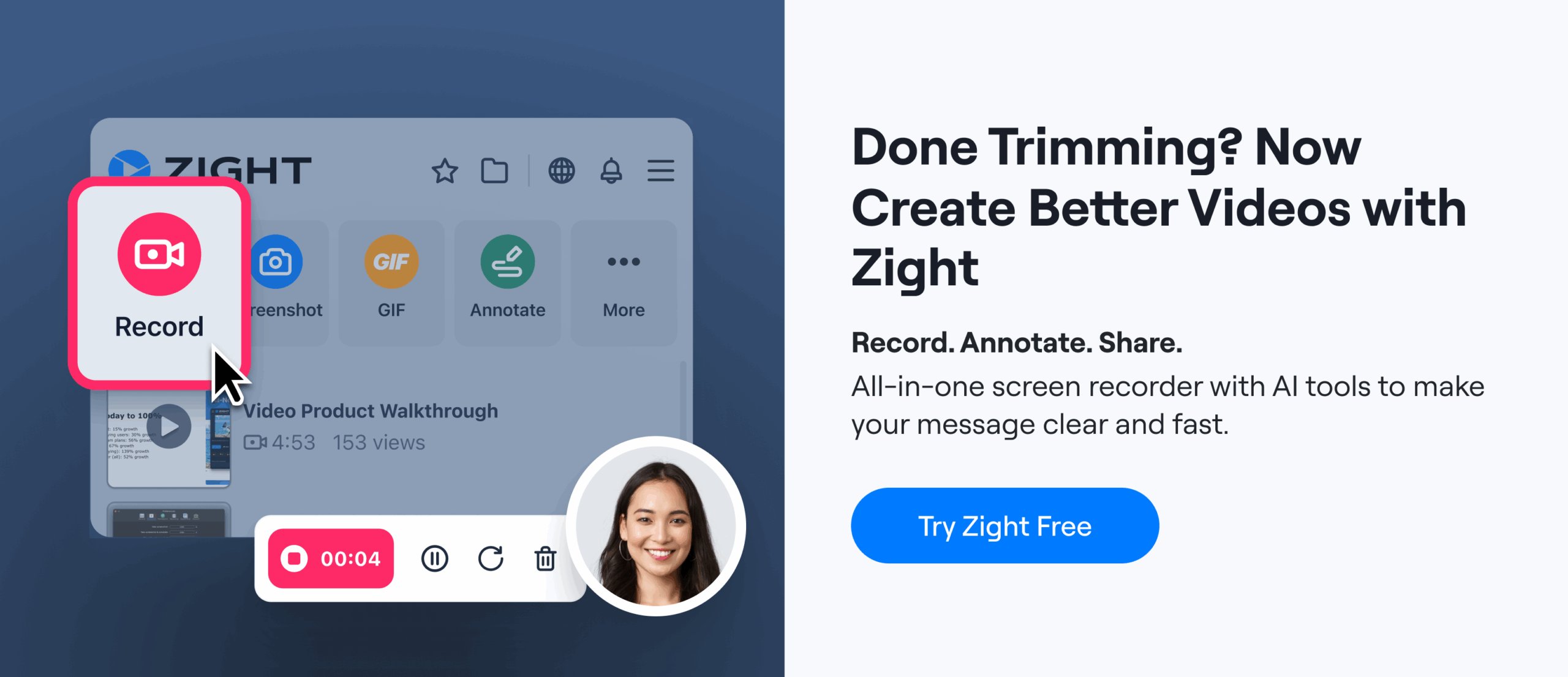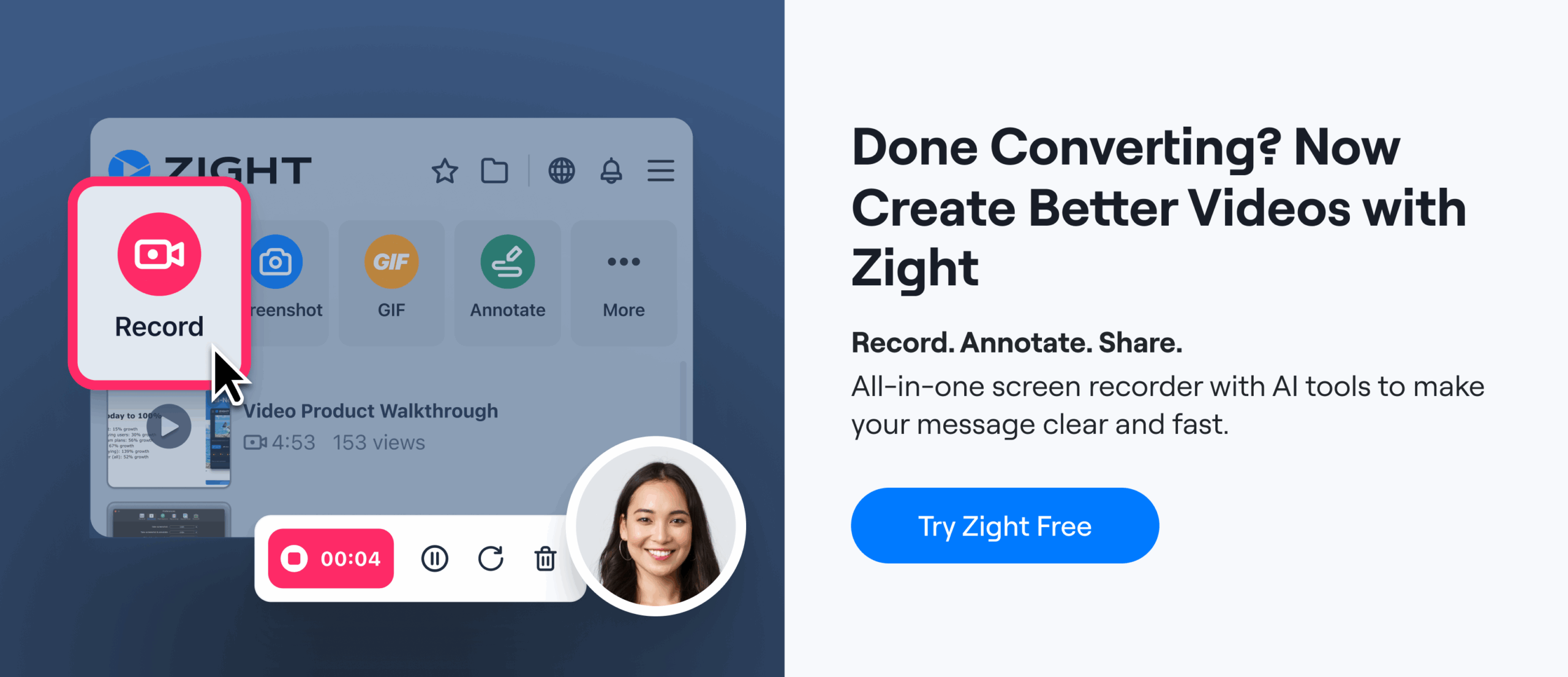Imagine walking into your favorite coffee shop. The barista greets you by name, knows your usual order, and even takes a moment to ask about your day. This simple interaction makes you feel valued and appreciated. It’s not just the coffee that keeps you coming back—it’s the exceptional customer experience.
In the digital world, this concept translates into personalized interactions and seamless customer service. For instance, using an all-in-one app like Zight, which offers screen recording, GIF making, and webcam recording capabilities can help businesses communicate more effectively with customers by providing personalized, clear, and engaging visual content.
This underscores a vital business truth: the impact of customer experience on brand loyalty is profound. In this article, we’ll explore how customer experience affects brand loyalty and offer strategies for improving customer experience to foster brand loyalty.
The Importance of Customer Experience
Customer experience (CX) encompasses every interaction a customer has with your brand, from the first visit to your website to post-purchase support. It’s a holistic journey that includes the emotional, psychological, and practical aspects of customer engagement.
Why Does Customer Experience Matter?
- First Impressions: A positive initial experience sets the tone for the relationship.
- Consistency: Consistent, positive interactions build trust and reliability.
- Connection: Memorable experiences foster emotional bonds that go beyond the transactional.
How Customer Experience Affects Brand Loyalty
1. Building Trust and Reliability
When customers consistently receive excellent service, they begin to trust your brand. Trust is a cornerstone of brand loyalty. If your customers believe they can rely on your product or service to meet their needs, they are more likely to return.
2. Enhancing Emotional Connection
A great customer experience does more than satisfy—it delights. When customers feel appreciated, they form an emotional connection with your brand. This positive experience transforms them from one-time buyers into loyal advocates who promote your brand through word-of-mouth.
3. Differentiation in a Competitive Market
In a saturated market, customer experience can be the differentiator that sets your brand apart. While products and services may be similar, the way you treat your customers can make all the difference. A company with stellar customer service often enjoys a more loyal customer base.
4. Encouraging Repeat Business
Satisfied customers are more likely to return. They know what to expect and appreciate the quality of service they receive. This predictability and satisfaction encourage repeat purchases, which are essential for long-term customer retention and business success.
5. Driving Positive Word-of-Mouth
Happy customers are likely to share their experiences with friends and family. This organic promotion is invaluable, as people tend to trust recommendations from those they know. Positive word-of-mouth can significantly enhance your brand’s reputation and attract new customers.
Strategies for Improving Customer Experience

1. Personalization
Personalized experiences show customers that you value them as individuals. Utilize customer data to tailor interactions, recommendations, and communications. For example, addressing customers by their names in emails, remembering their preferences, and sending personalized offers can make a big difference.
Personalization can extend beyond just names and offers. For instance, if a customer frequently purchases a particular product, you can send them updates when new versions or related items are available. Zight is a good app you can use to create personalized visual content, such as GIFs or tailored video messages to enhance these customer experiences.
2. Investing in Training
Your employees are the face of your brand. Investing in their training ensures they have the skills and knowledge to provide excellent customer service. Training programs should focus on empathy, problem-solving, and effective communication.
Regular workshops and continuous learning opportunities can keep your team updated on the latest customer service trends and technologies. Training should also include real-life scenarios and role-playing exercises to prepare employees for various customer interactions.
3. Utilizing Technology
Leverage technology to enhance the customer experience. Chatbots can provide instant support, CRM systems can help manage customer relationships, and AI can offer recommendations. Technology should complement human interaction, not replace it.
Implementing an omnichannel strategy with a CRM with AI ensures all customer interactions are integrated and seamless across various platforms.
For example, if a customer starts an inquiry via social media but prefers to continue it via email, the transition should be smooth, and all previous interactions should be accessible. To take it up a notch, Zight’s screen recording and sharing capabilities can assist customer service teams in providing visual walkthroughs and support, enhancing the overall customer experience.
In addition, Zight can also help businesses create personalized video messages, product demonstrations, and GIFs to explain complex issues or share exciting updates, further enhancing customer engagement and satisfaction.

4. Gathering and Acting on Feedback
Customer feedback is a goldmine of information. Regularly gather feedback through surveys, reviews, and direct interactions. More importantly, act on this feedback. Show customers that their opinions matter by implementing changes based on their suggestions.
Creating a feedback loop where loyal customers are informed about how their customer feedback has led to improvements can strengthen the relationship. Implementing tools like Net Promoter Score (NPS) and Customer Satisfaction Score (CSAT) can help to measure customer loyalty, and track customer satisfaction levels.
Another handy tool is Zight which can be used to create engaging video updates or visual reports to show customers how their feedback has been incorporated.
5. Ensuring Consistency Across Channels
Customers interact with your brand through multiple channels—online, in-store, via social media, etc. Develop a unified customer service protocol that applies across all channels. This includes having consistent messaging, tone of voice, and service standards.
Use integrated systems, such as phone systems for business, to ensure that all customer data and interactions are centralized, enabling any team member to access a complete view of the customer’s history. This improves efficiency and ensures that customers receive the same level of service regardless of the channel they choose.
6. Creating a Customer-Centric Culture
Your company culture should prioritize customer satisfaction. When every employee, from front-line staff to executives, understands the importance of customer experience, it becomes a core part of your business strategy.
A customer-centric culture ensures that customer needs are always at the forefront. This can be achieved by embedding customer experience goals into the company’s mission and values. Recognize and reward employees who exemplify excellent customer service and encourage a mindset of continuous improvement.
7. Rewarding Loyalty
Loyalty programs are an effective way to reward repeat customers. Offer incentives such as discounts, exclusive offers, or early access to new products. Beyond traditional loyalty programs, consider creating personalized rewards based on individual customer behaviors and preferences.
Gamification of a customer loyalty program can also be an effective strategy, where customers earn points for various actions, not just purchases, that can be redeemed for rewards. Exclusive events, personalized thank-you notes, and special recognition can also make loyal customers feel valued.
Case Studies: Brands Excelling in Customer Experience
1. Apple
Apple is renowned for its customer experience, setting a high standard in the industry. From the intuitive design of their products to the personalized service at their stores, every aspect is designed with the customer in mind. Examples of excellent customer experience:
- Intuitive Product Design: Apple products are known for their user-friendly interfaces. The seamless integration between hardware and software ensures that even non-technical users can navigate their devices easily. Features like Face ID and the Apple Ecosystem (where all Apple devices work together seamlessly) highlight their commitment to enhancing user experience.
- Apple Store Experience: The layout of Apple Stores is designed to be open and inviting. Customers are encouraged to interact with products before making a purchase, and knowledgeable staff are available to answer questions. The stores often host free workshops and events, providing added value to customers.
- Genius Bar: Apple’s Genius Bar offers personalized technical support and advice. Customers can make appointments online for one-on-one sessions, where experts diagnose issues and provide solutions. This level of support fosters a loyal customer base that appreciates Apple’s commitment to service.
2. Zappos
Zappos, an online shoe and clothing retailer, has built its reputation on exceptional customer service. Their “WOW” philosophy focuses on creating moments of delight for their customers. Examples of excellent customer experience:
- 24/7 Customer Service: Zappos offers round-the-clock customer service via phone, email, and chat. Their representatives are empowered to do whatever it takes to make customers happy, including offering full refunds without requiring returns in some cases.
- Free Shipping and Returns: Zappos provides free shipping on all orders and returns, making the shopping experience risk-free. This policy encourages customers to purchase with confidence, knowing they can easily return items if needed.
- Personalized Interactions: Zappos encourages employees to build personal connections with customers. Representatives are known to send handwritten thank-you notes, flowers, or even gifts to customers who have had a particularly positive or challenging experience.
3. Amazon
Amazon’s customer-centric approach is a key factor in its success. Features like one-click purchasing, personalized recommendations, and hassle-free returns make the shopping experience seamless. Examples of excellent customer experience:
- One-Click Purchasing: Amazon’s one-click purchase option streamlines the buying process, making it incredibly easy for customers to complete transactions. This convenience reduces friction and enhances the overall shopping experience.
- Personalized Recommendations: Amazon uses sophisticated algorithms to analyze customers’ browsing and purchase histories. Based on this data, Amazon provides personalized product recommendations that are highly relevant to each customer. With AWS’s advanced machine learning services, businesses can build similar recommendation engines that adapt to customer preferences dynamically. Using AWS monitoring, teams can ensure these systems run efficiently and troubleshoot anomalies before they impact users.
- Amazon Prime: The Amazon Prime membership program offers numerous benefits, including free two-day shipping, access to streaming services, exclusive deals, and more. The convenience and value provided by Prime encourage customers to maintain their memberships.
- Hassle-Free Returns: Amazon’s return policy is designed to be as easy as possible. Customers can initiate returns online and print return labels at home, with many items eligible for free return shipping. This ease of returning items reassures customers and builds trust in the brand.
Conclusion on Customer Loyalty
The impact of customer experience on brand loyalty cannot be overstated. A positive customer experience builds trust, fosters emotional connections, and differentiates your brand in a competitive market.
Remember, it’s not just about meeting customer expectations but exceeding them. By doing so, you create advocates for your brand who will spread the word, which is the best form of advertisement for the customer lifetime value of your brand.












